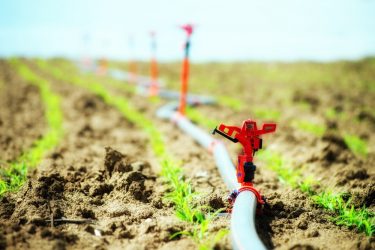Changes planned for Oregon ag water quality oversight
Oregonians For Food And Shelter
Regulators are implementing a new approach to ensure Oregon farmers comply with agricultural water quality standards.
Oregon’s farm regulators aim to increase the impact of their agricultural water quality program by shifting how grant money is allocated, among other changes.
Ensuring that farmers comply with water quality standards is within the purview of the Oregon Department of Agriculture, which traditionally focused its attention on waterways subject to complaints.
In recent years, ODA has moved beyond the complaint-driven process to determine for itself which streams and rivers should be scrutinized for water quality problems.
Based on aerial photos and other data, the agency each year selects several “strategic implementation areas,” or SIAs, where waterways are examined more closely.
During the 2015-2017 biennium, roughly $1 million from the Oregon Watershed Enhancement Board was spent on compliance projects in the SIAs, such as planting vegetation near denuded streams or moving manure piles away from waterways.
Under the agency’s new “coordinated streamside management partnership,” this funding will be dedicated to planning rather than on-the-ground work.
In the 2017-2019 biennium, another $1.2 million in OWEB money will be available, but now the funds will be directed toward technical assistance for local soil and water conservation districts and watershed councils.
The change is expected to help smaller districts and councils — some of which only have a single employee — with tasks such as grant-writing and paying for engineering plans, said John Byers, manager of ODA’s agricultural water quality program.
Aside from rectifying specific problems so landowners comply with water quality standards, the program will also identify additional measures to “uplift” water quality, Byers said.
Paying for the projects themselves will require separate OWEB grants, he said. “We feel they’re going to be as competitive or more competitive because of that uplift.”
Once it annually chooses six “strategic implementation areas,” ODA will consult with the Oregon Department of Environmental Quality and Oregon Department of Fish and Wildlife about the best methods for improving water quality.
“Let’s make sure we’re looking at this from a coordinated perspective,” said Byers.
Historically, efforts to improve agricultural water quality were akin to “random acts of conservation,” said Lisa Hanson, ODA’s deputy director.
Now, ODA will provide local groups with information from DEQ and ODFW up front, helping them to understand where projects will be most effective for fish and environmental health, Hanson said.
“If we work with these 10 landowners, we can have a big impact,” said Meta Loftsgaarden, OWEB’s executive director.
The agency will also be monitoring aspects of water quality, such as sedimentation and temperature, to see whether its efforts are proving effective.
Monitoring has already occurred in some Oregon waterways, but systematically analyzing SIAs will provide state agencies will a more expansive perspective, said Loftsgaarden.
“We’re able to get a very different story for agriculture than we’ve had in the past,” she said. “It tells a broader, more statewide story.”
Rather than focus on individual landowners, the monitoring component will encompass the larger waterway.
“The monitoring is going to be at the watershed scale and it’s going to be in-stream,” she said.
While ODA ultimately has the authority to issue civil penalties to landowners, so far it hasn’t been necessary under the SIA approach, Byers said.
Landowners have been responsive to warning letters informing them that water quality problems need to be fixed, he said.
Disclaimer: Articles featured on Oregon Report are the creation, responsibility and opinion of the authoring individual or organization which is featured at the top of every article.


